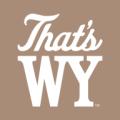Native American culture has long been ingrained in Wyoming and remains an important part of the state’s makeup. Many Plains Indian tribes, including the Arapaho, Arikara, Bannock, Blackfeet, Cheyenne, Crow, Gros Ventre, Kiowa, Nez Perce, Sheep Eater, Sioux, Shoshone and Ute tribes, have left their mark here. Two tribes – The Eastern Shoshone and Northern Arapaho – currently call Wyoming’s sprawling 2.2 million acre Wind River Indian Reservation home. Take the time to learn about tribes both past and present by exploring Wyoming’s Native American sites scattered throughout the state.
Devils Tower National Monument

Originally called Bear Lodge by area tribes, Devils Tower is a sacred Native American site that is revered by multiple Plains Indian tribes to this day. During the month of June, many tribes gather to perform personal and group ceremonies. Some of these ceremonies include leaving a prayer cloth or other religious artifacts. Please refrain from touching or disturbing these items.
Learn more about the sacred history of Devils Tower.
Medicine Wheel National Historic Landmark

Located in the Bighorn Mountains in northcentral Wyoming, the Medicine Wheel was designated a National Historic Landmark in 1970. Medicine wheels have been used for navigation as well as important spiritual practices, including ceremonies, vision questing and medicinal plant gathering. This wheel in the Bighorns is the best-known and largest preserved wheel in the northwestern plains.
Medicine Wheel National Historic Landmark is open from mid-June to September from 8 a.m. to 5 p.m., weather permitting. Please keep in mind that this is an active Native American sacred site; if a ceremony is taking place during your visit, please stand back and observe quietly. Photographing the wheel is allowed, however, be careful to not disturb anything and be mindful of the sacred nature of the site.
Learn more about how to visit this site responsibly.
Vore Buffalo Jump

Discovered in the early 1970s, Vore Buffalo Jump is an archaeological site displaying the hunting patterns of late-Prehistoric Plains Indians. Currently only 10 percent of the site has been excavated, leaving decades of future scientific research. The site is in northeast Wyoming off Interstate 90 it is open from June 1 through August 22 from 8 a.m. to 6 p.m.
Petroglyphs

Across Wyoming, you can find petroglyphs left behind from the Plains Indians. These areas in Wyoming featuring petroglyphs allow you to see some of the earliest Native American sites within our state.
Castle Gardens Recreation Site

The Castle Garden Petroglyphs are located 45 miles east of Riverton in central Wyoming. The site includes a parking lot and gravel foot paths to help you manage your way around.
Legend Rock Petroglyph Historic Site

Located 29 miles north of Thermopolis is a 1,312-foot long, near-vertical cliff with over 92 petroglyphs. Legend Rock has been a sacred Native American site for thousands of years. It includes a visitors’ center (summer months only), interpretative trails and a picnic shelter.
White Mountain Petroglyphs

Located about 30 miles north of Rock Springs you can find petroglyphs on a 300-foot cliff face. Take your time viewing hundreds of figures carved into sandstone at the White Mountain Petroglyphs . To reach this location, it is encouraged to have a four-wheel-drive vehicle.
Medicine Lodge State Archeological Site
Located six miles north of Hyattville you will find Medicine Lodge Archaeological Site . The site features petroglyphs and pictographs dating back 2,000 years. The visitor center is open seasonally from May to October. If visiting in the off season, make sure to call ahead for the center to be unlocked.
Wind River Indian Reservation

The Wind River Indian Reservation is the seventh largest reservation in the country and is home to the Eastern Shoshone and Northern Arapaho tribes. While visiting the reservation not only will you find unique experiences, but if you visit from June to September there are four large powwows you can attend. In Lander and Riverton, the surrounding towns outside of the reservation, you can find weekly dance exhibitions from June through August. Be sure to check out these Native American sites within the Reservation.
Sacajawea’s Gravesite

Sacajawea belonged to the Shoshone Tribe, but when she was twelve an enemy tribe, the Hidatsa, captured her. She went on to marry Toussaint Charbonneau and through him guided Lewis and Clark. At the end of her life, it is believed that Sacajawea returned to her people and is buried among them in Fort Washakie. To visit Sacajawea’s Cemetery, you will venture onto the Wind River Reservation.
Chief Washakie’s Gravesite
Chief Washakie was the last chief of the Eastern Shoshone Tribe. He was an integral part of helping his tribe during a time of great upheaval. He has a long legacy in Wyoming and the surrounding areas. His grave is in the Fort Washakie Cemetery.
Wind River Wild Horse Sanctuary
The Wind River Wild Horse Sanctuary provides a great glimpse into a working ranch, Native American culture and wild horses. It is one of four public off-range pastures in the U.S. and the only one on a reservation. The sanctuary is located on Oldham’s Ranch. You can schedule a privately guided tour during operating summer hours.
Interested in learning more? Explore our Native American Culture page.

